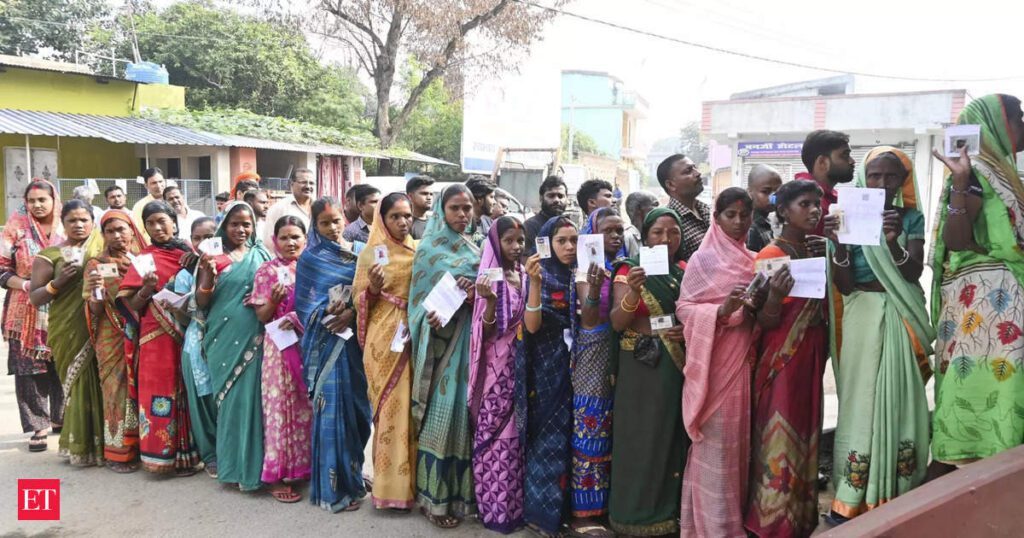Intensified Political Landscape in 2024: The Rise of Women Voters
In 2024, India experienced significant political contendership as the BJP-led National Democratic Alliance (NDA) faced off against the opposition bloc known as INDIA in a series of elections, including a seven-phase Lok Sabha election alongside crucial state polls in Maharashtra, Jharkhand, and Haryana. This year marked a turning point, as political fortunes became increasingly tied to the preferences of women voters, who have emerged as a potent and decisive electoral force in recent years.
The Importance of Women Voters in Electoral Dynamics
Recognizing the rising influence of women as an essential vote bank, political parties raced to introduce initiatives aimed at attracting female voters. Over ten states rolled out financial assistance programs targeted at women, with total yearly commitments for poll-linked financial benefits exceeding $20 billion, as reported by Bloomberg.
NDA’s Performance in the Lok Sabha Elections
The 2024 Lok Sabha elections resulted in the NDA reclaiming power at the national level, although with a noticeable decline in seat numbers. The NDA secured 293 seats as a coalition, with the BJP winning 240 seats—down from its lofty total of 303 in the previous election. In contrast, the INDIA bloc witnessed an increase in its parliamentary presence, claiming 234 seats, including 99 seats attributed to the Congress’s own efforts.
Despite losing substantial ground nationally, the BJP found its strength in Madhya Pradesh, where it won all 29 seats, largely credited to the popular Ladli Behna Yojana—a financial assistance initiative offering ₹1,000 to women. Chief Minister Shivraj Singh Chouhan’s role as a champion for women’s welfare helped the BJP garner significant support, and the scheme played a pivotal role in the state’s Assembly elections.
Rising Voter Turnout Among Women
A remarkable shift occurred in voter demographics, with women achieving a turnout rate of 65.8% during the Lok Sabha elections, surpassing male turnout—which stood at 65.6%. This marked only the second instance in Indian electoral history where female participation exceeded that of their male counterparts. The previous general elections in 2019 had already signaled the narrowing of the gender gap, prompting political parties to take women voters seriously as a key demographic.
State Elections Show Women’s Influence
Women voters in Maharashtra and Jharkhand significantly impacted recent state election outcomes. The ruling Shinde faction of Shiv Sena took a page from the BJP’s playbook by launching the Ladki Bahin Yojana, offering ₹1,500 monthly to low-income women, which was later increased to ₹2,100. Despite a narrow margin in the Lok Sabha elections, this initiative bore fruit in the ensuing assembly polls, securing a historic number of seats for the ruling coalition.
In Jharkhand, the incumbent Hemant Soren government introduced the Maiya Samman scheme, providing ₹1,000 per month to women aged 21-50, benefitting millions and swaying voter sentiments in favor of the Jharkhand Mukti Morcha (JMM). Notably, women exceeded men in voter turnout across both phases of the Assembly elections, emphasizing their pivotal role in shaping political outcomes.
Looking Ahead: Delhi’s Evolving Political Strategies
As the political landscape shifts, the Aam Aadmi Party (AAP) in Delhi has responded proactively by implementing aid programs for women in its 2024-25 budget. Chief Minister Arvind Kejriwal announced plans to raise monthly support to ₹2,100 contingent on electoral success in February 2025.
Meanwhile, the BJP has expressed intentions to replicate the successful Madhya Pradesh model in Delhi. Their local leadership is seeking approval for cash transfer schemes aimed at women, vital for countering AAP’s initiatives and maintaining electoral competitiveness.
The emerging trends in Indian politics reflect not just the shifting power dynamics but also the growing recognition of women as formidable influencers in electoral politics. The events of 2024 herald a possible new dawn for female voter engagement and empowerment in India’s democratic journey.


